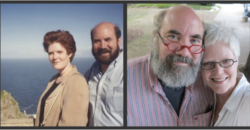Poets explain history, fear, love, and moats to us
 History
History
It’s like this, the king marries
a commoner, and the populace cheers.
She doesn’t even know how to curtsy,
but he loves her manners in bed.
Why doesn’t the king do what his father did,
the king’s mother wonders—
those peasant girls brought in
through that secret entrance, that’s how
a kingdom works best. But marriage!
The king’s mother won’t come out
of her room, and a strange democracy
radiates throughout the land,
which causes widespread dreaming,
a general hopefulness. This is,
of course, how people get hurt,
how history gets its ziggy shape.
The king locks his wife in the tower
because she’s begun to ride
her horse far into the woods.
How unqueenly to come back
to the castle like that,
so sweaty and flushed. The only answer
his mother decides, is stricter rules—
no whispering in the corridors,
no gaiety in the fields.
The king announces his wife is very tired
and has decided to lie down,
and issues an edict that all things yours
are once again his.
This is the kind of law
history loves, which contains
its own demise. The villagers conspire
for years, waiting for the right time,
which never arrives. There’s only
that one person, not exactly brave,
but too unhappy to be reasonable,
who crosses the moat, scales the wall.
Damn, poets are smart, the only ones who would think to tell us the history of the world in so many words. Isn’t that what history is, a cheering when the royalty marries a commoner, a narrowing of options and increased legislation when widespread dreaming and general hopefulness breaks out. As if legislating behavior will help us abdicate our responsibility for making choices.
And always, always, there’s only that one person, not exactly brave, but too unhappy to be reasonable, who crosses the moat, scales the wall. Love is.







